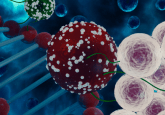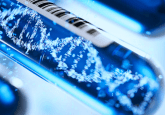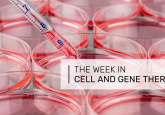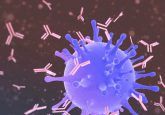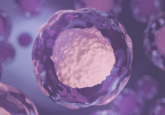
Yan Zhang is the Chief Executive Officer of Mission Bio. As a veteran of the genomics industry, Yan is passionate about empowering teams to deliver highly differentiated innovative solutions, realizing the mission of accelerating their application to improve human health. Before Mission Bio, Yan served executive roles at Thermo Fisher Scientific (MA, USA), where she led commercial teams in China for rapid market success and held general management roles for reproductive health and microarray businesses. She also led product management and commercialization efforts for genetic analysis solutions at Affymetrix (CA, USA), NuGEN Technologies (CA, USA) and Molecular Devices (CA, USA). Yan holds a Ph.D. in Biochemistry from the Medical College of Wisconsin (USA).
In this interview we talk to Yan Zhang, Chief Executive Officer of Mission Bio (CA, USA), a life sciences company with the aim to help researchers and clinicians unlock single-cell biology to enable the discovery, development, and delivery of precision medicine. Yan discusses the benefits and challenges of Mission Bio’s Tapestri platform for single-cell DNA multi-omics and its place in the world of cell and gene therapy.
What does Mission Bio do?
Mission Bio (CA, USA) has developed high-throughput single-cell multi-omics products based on microfluidics technology spun out of the University of California, San Francisco (CA, USA) in 2014. Our platform, called Tapestri, can directly analyze DNA for genotyping and protein expression for phenotyping. It does this simultaneously in individual cells, at scale, processing thousands of cells at a time; no other platform can do this. Researchers have already used Tapestri to better understand disease biology, publishing extensively on discoveries that can make cancer therapies more effective and even assist in new drug development. More recently, we’ve demonstrated the platform’s novel utility for characterizing cell and gene therapy products. For instance, Tapestri can measure viral transduction or gene editing in individual cells and simultaneously detect targeted proteins on top of that.
What are the benefits and challenges of applying high-speed, large-scale single-cell DNA sequencing to developing breakthrough therapeutics?
Typically, high-throughput sequencing involves bulk analysis, which can’t capture the kind of nuance needed to truly understand the complexity of diseases such as cancer. For example, targeted therapies have been powerful tools for certain individuals, but most patients develop treatment resistance that leads to relapse. That’s often driven by secondary mutations in a small number of cells. Bulk sequencing can tell you the most commonly occurring mutations in a patient’s tumor, but single-cell DNA multi-omics can tell you precisely which mutations occur in individual cells. This kind of data can help drug developers prioritize targets and pathways for new therapies, demonstrate therapeutic efficacy, and understand mechanisms of resistance.
However, if it were easy, everyone would do it. Aside from Tapestri, analytical products in the large-scale single-cell space are limited to RNA detection. Measuring RNA expression has its uses but doesn’t completely reveal a cell’s genotype. Only by directly measuring DNA can one be certain of the mutations a cell harbors.
How is Mission Bio’s Tapestri Platform for single-cell multi-omics enabling the development of cell and gene therapy?
Cell and gene therapies have begun delivering on their enormous potential, but there remains a need to more thoroughly understand the products and how they work. Thorough characterization of cell and gene therapies has been a logistical challenge, requiring the harmonization of data sets from multiple disparate platforms and instruments. Even at their best, these inefficient ad hoc workflows often fail to capture cell-to-cell variation.
That’s problematic because cells used as therapeutics may be heterogeneous in the genetic alterations they contain or in their lineage or state. These variations can affect both the efficacy and safety of the products.
The Tapestri platform uses an oligonucleotide barcoding system for tagging DNA and proteins from individual cells, which are read out simultaneously. It’s the first and only such tool on the market today, and it enhances therapeutic characterization in ways that can reshape the cell and gene therapy development process. For cells genetically altered using viral editing tools, single-cell characterization allows for measuring vector copy number and transduction efficiency. For cells edited using CRISPR or other gene-editing tools, it can quantify on-target edits alongside off-target and translocation events. In all events, the measurements can be paired with immunophenotypic markers to further enrich the dataset, providing information about each cell type and state.
How can organizations in the field of advanced therapeutics make sure they are designing therapies for continually evolving diseases?
This is the precision medicine dream: identifying the right therapies for the right individuals at the right time. Doing so will require a picture of heterogeneous and evolving diseases like cancer down to individual cells. Today, cancer progression, treatment resistance and disease recurrence are commonplace because we do not fully understand clonal evolution or heterogeneity. This is because conventional bulk sequencing only reports averages and does not capture information of individual cells.
That’s one place where single-cell DNA and multi-omic sequencing technologies like Tapestri will be transformative, generating new insights that guide precision therapeutic approaches. Mission Bio’s partners have already made discoveries with our Tapestri platform that can change the way we understand and treat diseases such as acute myeloid leukemia, pediatric myelodysplastic syndrome (MDS), melanoma and lung cancer, to name a few.
Many of these cutting-edge medicines will be cell and gene therapies, which are inherently more complex than chemical drugs. These therapies often involve some form of genetic modification, but the modifications made are not all the same across cells – this variability can affect how the therapeutic works or even cause safety issues. That’s why adequate characterization needs to be done to fully understand each therapy, both during development and at clinical stages.
More advanced therapies may incorporate an increasing number of changes into individual cells, so thoroughly characterizing these products becomes even more important. Monitoring product consistency will be critical for these therapies going forward.
What are some challenges in the development of cell and gene therapies and how could modifying technologies such as CRISPR overcome them?
It’s likely there will continue to be a place for many types of gene-modifying technologies for the foreseeable future. Every FDA-approved CAR-T or gene therapy today uses viral vectors to deliver genes.
That said, transducing cells with these vectors have potential limitations and risks. First, the vector may or may not integrate into the genome in a host cell. When they do, several copies of the vectors may integrate, which varies across cells. Those with a high number of integrations have an increased risk of causing disruptions, some of which may lead to cancer. Conventional PCR analyses may report an average copy number in a given batch so can fail to identify cells that have dangerously high numbers of copies. What is important here is to measure the distribution of vector copy numbers in the product. For that, you need to look at individual cells.
Gene editing tools such as CRISPR do not rely on those vectors and may sidestep the safety concerns seen with therapies that rely on viral integration. They are also capable of more precise edits and can remove defective genes. That doesn’t mean they’re without risk: there may be heterogeneity from on- and off-target editing, as well as other aspects such as zygosity and aberrant translocations. Deep characterization is also needed for gene edited therapeutics to ensure their safety and efficacy.
In all events, Tapestri is positioned to de-risk development using single-cell insights that pair DNA with immunophenotypic markers to further enrich the dataset, providing information about each cell type and state.
Why is early characterization needed for the development of cell and gene therapies?
Characterization has typically meant integrating data from a patchwork of technologies, with no industry standard for the output, resulting in the development of a number of complex approaches. Early characterization with a single-cell multi-omic assay like Tapestri will capture cell-to-cell variation, streamline the analytical process and avoid lengthy cell culture steps. Deeper, more easily reproducible characterization can accelerate development and ultimately lead to better products.
Early characterization is also a bulwark against subsequent clinical delays. We’ve seen several high-profile cell or gene therapy clinical trials held up in the past year. Take the instance of a potentially dangerous clone detected in a patient reporting an adverse event in a clinical trial: a regulatory pause to determine the source of the clone and its relative danger could cost companies – and patients – months of delay. With better, earlier characterization, these sorts of complications could be minimized or prevented.
Still, hundreds of cell and gene therapies are already in clinical development. A greater understanding of product heterogeneity at any stage has the potential to improve both safety and efficacy. We have just announced the first tech transfer of a clinical trial-ready Tapestri assay for cell therapy to Avance for GMP qualification, which the CDMO will use with lots for human testing, a milestone for cell and gene therapy analytics.
How do you foresee the field of single-cell technology evolving in the future?
Single-cell analytics will be a game-changer for personalized medicine. The first step is a deeper understanding of disease and researchers have already made exciting findings with near-term implications. For example, last year, some of our academic partners used Tapestri to better understand pediatric MDS, identifying certain disease clones that could self-correct. One could imagine a single-cell diagnostic to identify patients who might never need the standard of care, an invasive bone marrow transplant.
Another group used single-cell sequencing to identify co-occurring secondary mutations causing resistance to a targeted cancer therapy. Could we someday screen patients for the presence of multiple oncogenic mutations in individual cells to predict resistance and recurrence? What about patient screening for clinical trials or companion diagnostics for cell therapies? Can single-cell DNA multi-omics be scaled for pathogens and extracellular vesicles? When it comes to possible applications of this technology, we’ve just begun to scratch the surface.
Find out more>>
Disclaimer
The opinions expressed in this interview are those of the interviewee and do not necessarily reflect the views of RegMedNet or Future Science Group.
In association with:



